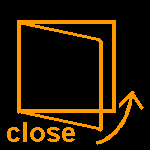Hensoldt Dialyt 10x50
MünzfernrohrDas hier gezeigte eher kleine Münzfernrohr basiert in seiner Bauweise auf dem speziellen Dialyt 10x50, wurde aber in einem kompletten Gehäuse mit Münzmechanismus gegosssen. Das Okular lässt sich wie beim größeren Graphoskop beliebig Drehen, so dass zwischen + und - der Dioptrieneinstellung kontinuierlich gewechselt wird und das Okular nicht vom Benutzer herausgedreht werden kann. Ebenso gibt es keine Schrauben zum Lösen des Deckels oder anderer Teile. Diese sind genietet. Damit ist es zum Einsatz als Münz-Aussichtsfernrohr für den allgemeinen Gebrauch vieler Menschen gegen Demontage gewappnet. Das Gehäuse mit Münzmechanismus lässt sich in einer Gabel, die ein angegossenes Rohr hat, rauf und runter kippen. Die hintere Abdeckplatte des Apparats ist mit "Einwurf 10 PFG - Stift zuerst ganz eindrücken, dann loslassen" graviert. Es gibt einen Münzschlitz und den Auslösestift. Innen befindet sich die Uhrmechanik, die zunächst die Verschlusscheibe im Objektivtubs wegklappt und nach Zeitablauf wieder einklappt. Dabei scheint ein Gegengewicht an einem Draht durch das untere Rohr geführt worden zu sein und mit einem das Uhrwerk gesteuert zu haben. Es gibt eine "Automatenmarke" (derzeit am Draht befestigt) als Verwendung einer 10 Pfennig-Münze; sie ist mit Löwen-Automaten Braunschweig gekennzeichnet. Ein Monokular mit gleicher oder ähnlicher Mechanik wird auf P. Ziegeheins Astro-Homepage beschrieben. |
Coin operated TelescopeThe rather small coin oeprated teelscope shown here is basically the same design as the special Dialyt 10x50, but was cast into single housing with its coin apparatus. The eyepiece can be rotated without stop like on the bigger Graphoscope so that the dioptre adjustment can be continiously changed between plus and minus, and moreover the user cannot screw out the ocular. There are also no screws to open the cover or other parts. All these are riveted. Thus, it is suitable for the use as a coin operated look-out telescope by many people without the risk of disamntling. The hosuing with its coin apparatus can be tilted up and down in a fork mount which has a cast-on tube. The back cover plate of the apparatus is engraved "Einwurf 10 PFG - Stift zuerst ganz eindrücken, dann loslassen" (Insert 10 pennies - first push in pin fully, then release). There is a coin slot and a trigger pin. Inside is a clockwork which first swings off the shutter disc in the obejctive tube, and after a certain elapsed time swings back blocking the view. During this process seemingly a counterweight on a wire which runs through the lower pillar tube and drives the clockwork. There is a "Automatenmarke" (wahser-like coin) - tied to the wire end at the moment - to be used as a 10 penny coin. It is marked "Löwen-Automaten Braunschweig" (Lion Apparatus Brunswick). A monocualr with a similar or same mechanics is depicted on P. Ziegehein's Astro-Homepage. |
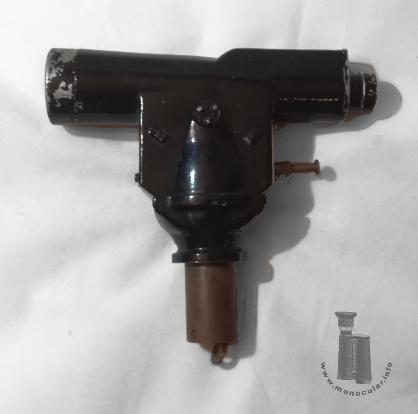
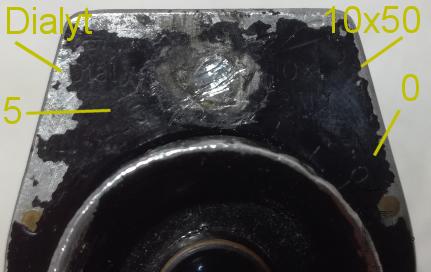
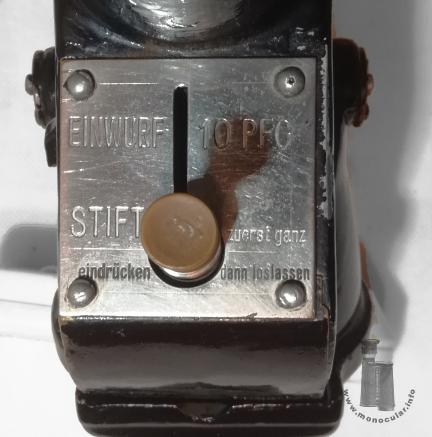
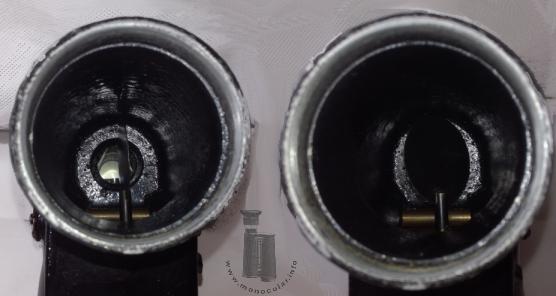
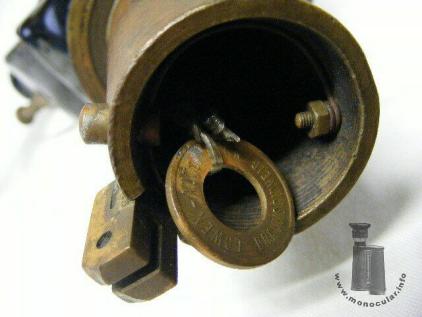
| Das Münzefernrorh ist vom Säulenrohrende bis zum Teleskoptubus oben 22 cm hoch. Es wiegt 2640g. Es dürfte zwischen den Weltkriegen gebaut worden sein. | The coin-operated teelscope measrues 22 cm fromt he end of the pillar tube to the top of the telescope tube. It weighs 2640 g. Its production date must lie between the world wars. |
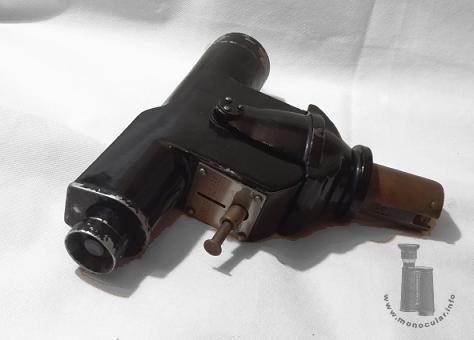
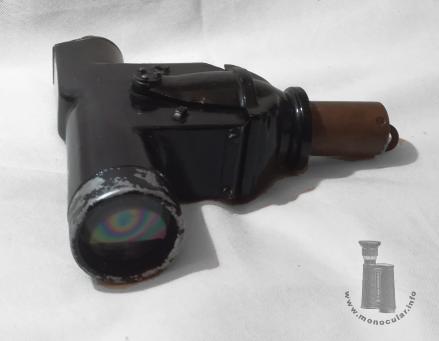
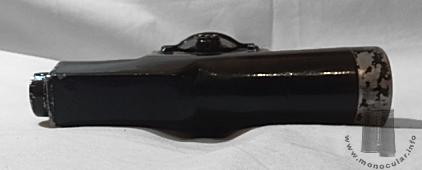
Fotos: Zeun

